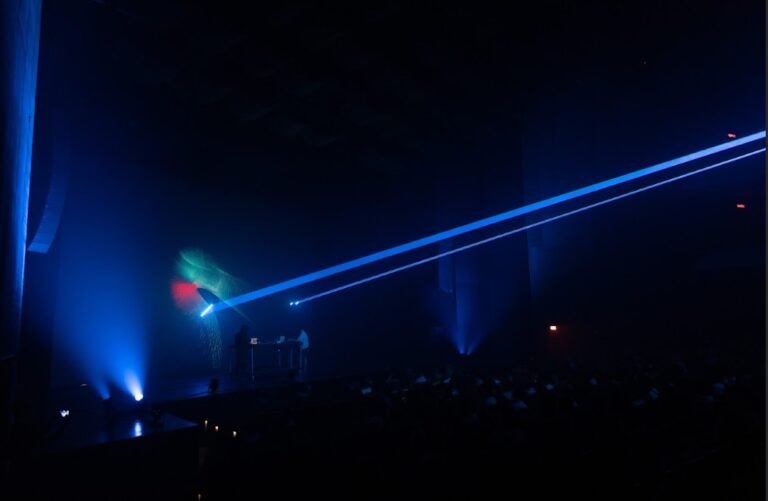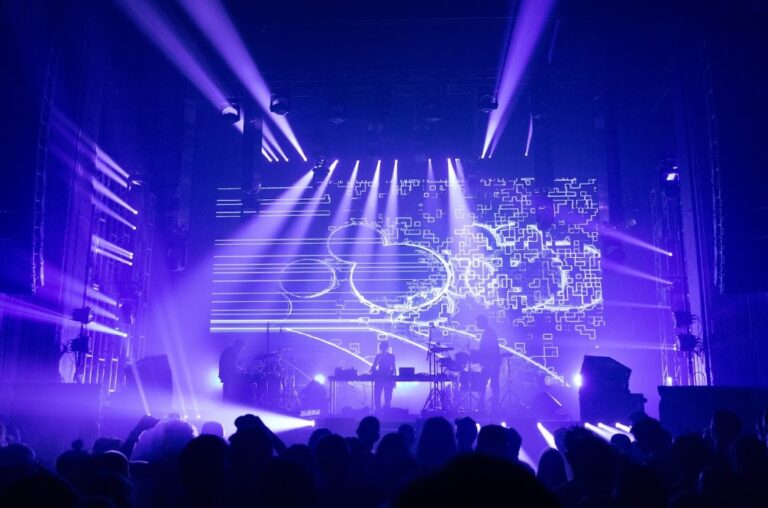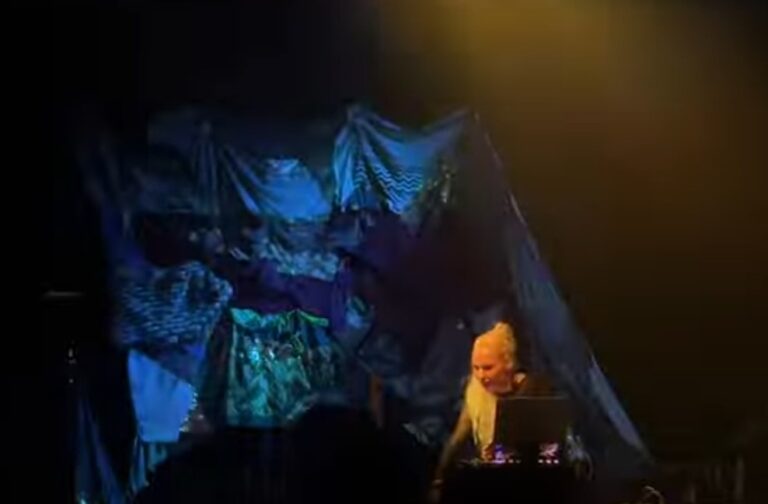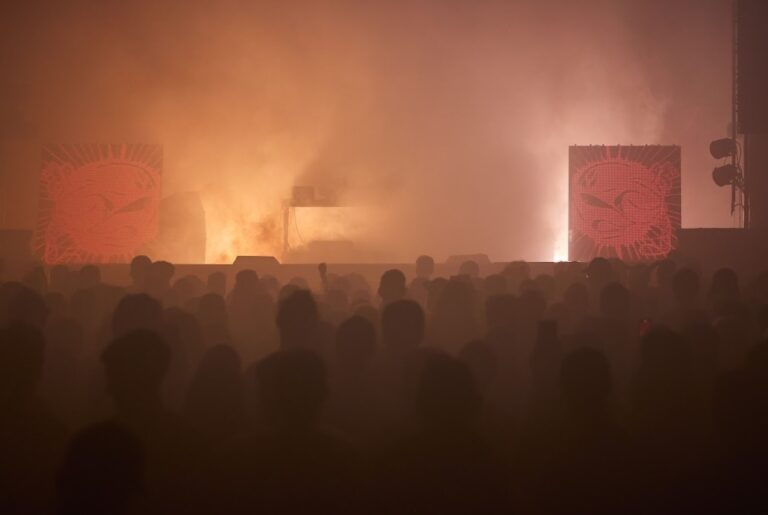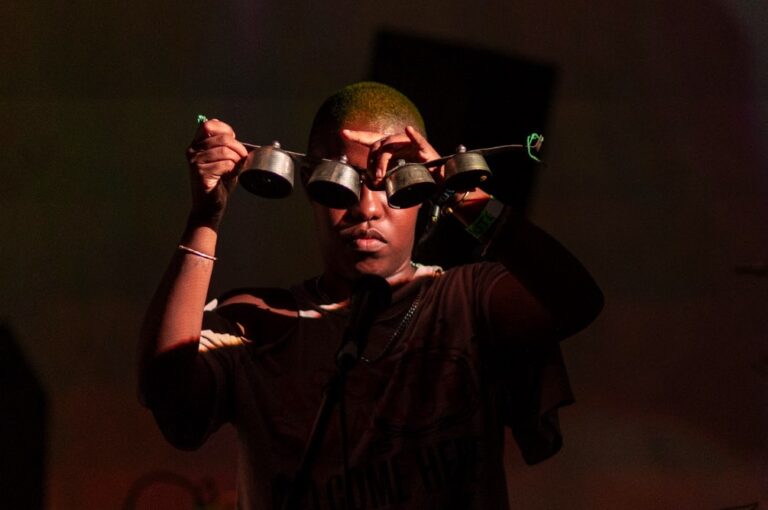Synspecies: mesmerizing cosmogonic sculpture
SYNSPECIES ES+SL – ASBU
Live A/V | North American premiere
The A/Visions 1 series came to a close with Synspecies, an absolutely magnificent and uplifting work. A cosmogonic myth flavored with posthumanity, algorithms and lasers. This sculptural performance from another universe was an absolute, divinatory success.
Mutek has left its mark on the history of electronics, developing its trademark over the past 25 years. With this presentation, we were in the Mutek spirit more than ever.
Perfect symbiosis and synchronization between a beam of light forging evolving visuals and a powerful, devastating soundtrack. This is how the process of creating the universe came to the fore, and the wonder of life was born. Walls trembled and infernal red shadows penetrated our souls.
This concert of abstract algorithmic music and creative coding by Elías Merino and Tadej Droljc was bewitching and diabolically beautiful. Scripted by a powerful luminous laser, the universe came to life through geometric shapes, spirals and lines, offering up ghostly-looking characters.
Slovenian artist Tadej is accustomed to fusing sound, image, light and sculpture, and his work has been awarded the Lumen Prize Student Award and the Dennis Smalley Scholarship. His work has been presented at prestigious festivals such as Ars Electronica, the Biennale NEMO in Paris and the Brighton Digital Festival. The Spanish Elías explores abstract algorithmic computer music, unusual electronics and instrumental compositions.
Synspecies: a definitively futuro-speculative, cosmogonic and post-eugenic work.
